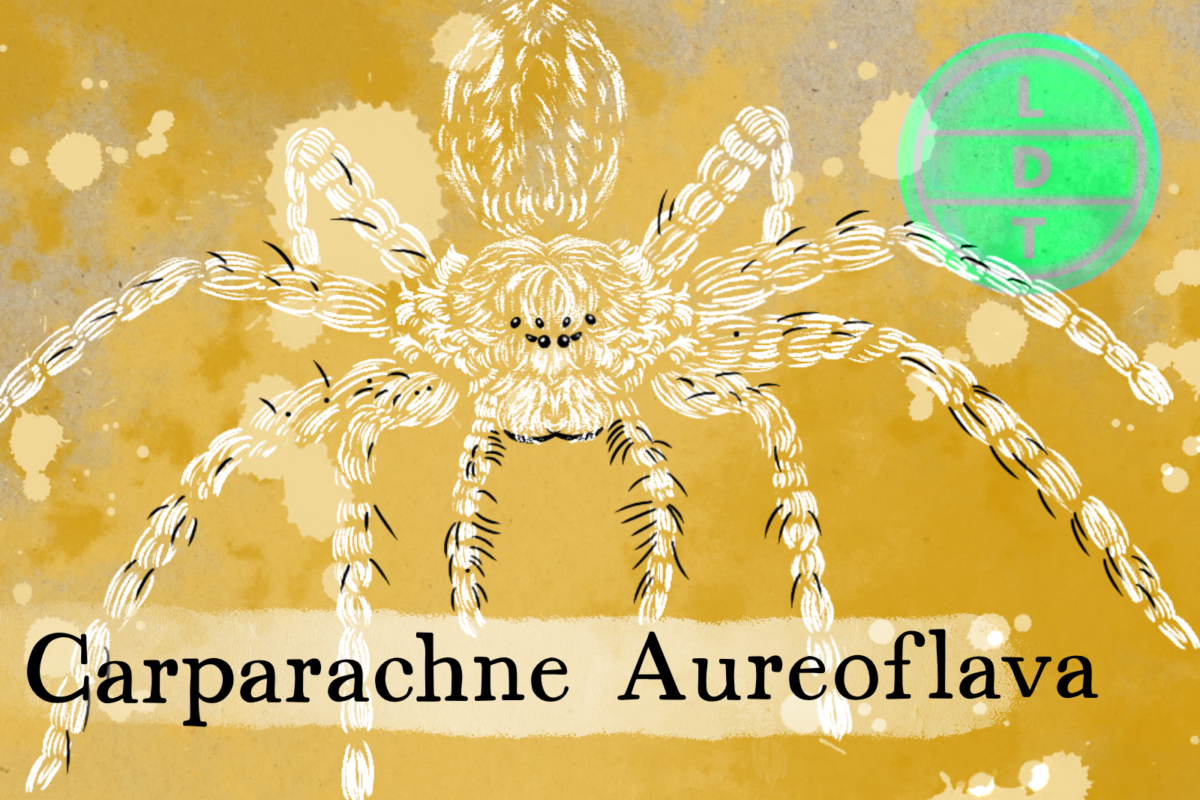“…and today we are talking about an animal whose mind commands the body to roll and it obeys. But more on that later.”
Members of the animal kingdom know that survival is the ability to swim in strange water–and sometimes that water is sand. Sand is coarse and rough and gets everywhere, but many animals, like the cartwheel spider, call it home. But what are they supposed to do when the fickle shifting of sand cuts off their best escape route? They can fight or they can flee but sometimes leaving is more like falling with style in Life, Death, and Taxonomy.
Description of the Cartwheel Spider
- Generally unpleasant to look at.
- It’s a very small spider, but up close it’s your typical horrific monster.
- Its carapace is a light tan except for its relatively large slightly grey abdomen.
- All eight of its eyes are arranged neatly in a row above two large mandibles tipped with sharp black fangs, giving it a very Shelob-esque appearance.
- As a ground-based huntsman spider, it has a thick body with long legs that spread out. Its feet are tipped with black.
Measure Up
Welcome to the beloved Measure Up segment. The official listener’s favorite part of the show! The part of the show when we present the animal’s size and dimension in relatable terms through a quiz that’s fun for the whole family. It’s also the part of the show that’s introduced by you when you send in audio of yourself saying, singing, or chittering the words Measure Up into ldtaxonomy at gmail dot com. We don’t have a new Measure Up intro.
Spider from American Tail (3:21)
Length
- 20 mm (0.7 inches)
- How many stentors go into the cartwheel spider?
- Hint: We’re not talking about royal trumpeters. We are talking about trumpet shaped protozoans. They can look like blobs, but when it’s time to go into filter feeding mode, they stretch themselves into cone-shapes that suck in food, and sometimes extend around prey.
- 10 stentors. The largest stentors can stretch to a length or two millimeters.
Burrow Length
- 40–50 cm (19 inches) deep
- How many burrows go into the length of the USS William Ward Burrows.
- Hint: The USS William Ward Burrows was a WWII transport ship. It was a private cargo ship that was acquired by the Navy for the war effort. Its missions usually involved transporting servicemen, civilians, and supplies around the Pacific. It survived the war, despite many close calls with the enemy.
- 235.4 burrows. The ship was 386 ft 2 in (117.7 m).
Fast Facts about the Cartwheel Spider
- Range: lives exclusively in the coastal Namib Desert off the West coast of southern Africa stretching from Angola through Namibia and into South Africa.
- Diet: Feeds nocturnally on insects and other invertebrates.
Major Fact: Whirly-Bug Saw
Wheel spiders make their burrows in soft sand, which means the digging is easy, but your castle is fragile.
One of the spider’s biggest enemies is the pompilid wasp. These wasps are used to hunting animals that seek shelter in the sand. Even though the spider is a seasoned digsman, the wasp is a certified sand shifter in its own right, capable of rapidly flicking its front legs to fling sand and destabilize the burrow.
The spider has two problems, it doesn’t want to be caught exposed, outside a collapsed burrow, and it doesn’t want its brood to be buried and cut off. However, the spider knows that it must not fear. Fear is the mind-killer.
So, the only solution is to make a run for it, leading the wasp away. However, the wasp has the power of flight, and can quickly catch up to a running spider.
But the spider knows that no wasp can outfly gravity, so it rides the dune. If the spider is on a steep enough dune, it will curl up its body, tip itself sideways, and try to hold onto its lunch.
The curled legs become the tread of a dread wheel, hurtling toward the bottom of the dune at 2,640 RPMs, which is equivalent to 217 mph in the family sedan. At spider size, this translates to 1 meter per second or 2.2 miles per hour.
While a brisk walk doesn’t sound like much, it’s more than enough to outpace a flying insect. Wheel spiders are the only species known to cartwheel away from predators, but it’s not the only one to roll.
Another arachnid sand citizen called the Moroccan flic-flac spider (Cebrennus rechenbergi ), also tumbles down dunes to escape prey, but it flic-flacs, or tumbles forward. The cool thing about this method is that it’s not just a passive, gravity-reliant escape strategy. They kick their legs to launch themselves into somersaults. That means they are also able to move uphill.
Ending: So get started on your burrow, keep an eye on the skies, and remember that your gymnastics routine could be the difference between living a long and happy life and becoming a living wasp egg incubator like the Golden Wheel Spider here in LDT.

